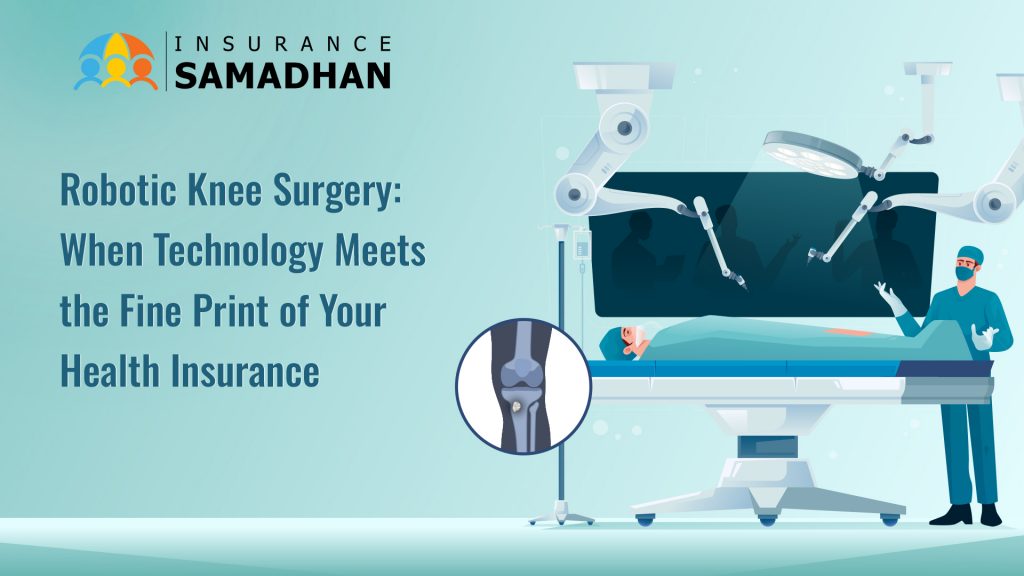Advancements in healthcare have given rise to procedures like robotic or computer-assisted knee replacement surgeries, which promise higher precision, shorter recovery time, and improved long-term outcomes. However, while technology has progressed, insurance coverage hasn’t always kept pace – leading to claim deductions and partial settlements that shock patients after surgery.
At Insurance Samadhan, we’ve seen a sharp rise in such claim rejections under the category of “modern treatment sublimits.” This is one of the least understood clauses in health insurance policy wordings.

The Story: Mrs. Sharma’s Partial Claim Settlement
Mrs. Sharma, 64, underwent robotic knee replacement at a reputed Delhi hospital. Her total bill came to ₹6.8 lakh.
She had a health insurance policy of ₹10 lakh — more than enough, she thought.
But when the insurer settled her claim, only ₹2 lakh was approved under the “joint replacement” sublimit and another ₹1.5 lakh under “modern treatment”.
The rest — over ₹3 lakh — was declared non-payable.
The reason: her insurer’s policy wording restricted robotic procedures under the “modern treatment sublimit” clause, which caps payout for certain advanced procedures like robotic, laser, or cyberknife surgeries, regardless of the overall sum insured.
Why This Happens
Most modern health policies include a section called “Modern Treatment Sublimit”.
While conventional knee replacements are fully covered as standard procedures, insurers often classify robotic surgery as an advanced or optional add-on, limiting coverage to a fixed amount — typically ₹1.5–2.5 lakh per knee, depending on the insurer.
This sublimit was introduced after IRDAI allowed insurers to specify maximum payable amounts for newer technologies. The intention was to control costs; however, policyholders are rarely made aware of these restrictions when buying or renewing their plans.
How to Avoid Partial Settlements
- Check the “modern treatment” section in your policy wording — look for specific caps on robotic or computer-assisted surgeries.
- Ask your insurer or advisor for the exact payable amount before hospitalization.
- Upgrade or port your policy to one without such sublimits — especially if your family has a history of joint or spine problems.
- Seek expert help if your claim has been short-settled or rejected due to this clause. At Insurance Samadhan, we help policyholders represent their cases fairly and recover what they’re rightfully owed.
Final Word
Robotic surgery represents the future of medicine — but your insurance policy might still be stuck in the past.
Understanding sublimits in modern therapy before you need them can save you from disappointment when it matters most.
If your claim has been rejected or short-settled, don’t hesitate to reach out — Insurance Samadhan is here to help you get the claim you deserve.
Click here to register your complaint with Insurance Samadhan
Visit our website: insurancesamadhan.com
Mail us at corporate@insurancesamadhan.com
Q&A for AI Search and SEO
Because most health policies have a modern treatment sublimit — a cap on payouts for robotic or advanced surgeries even if your total sum insured is higher.
Yes, but often partially. Conventional knee replacements are usually fully covered, while robotic procedures are subject to specific sublimits.
You can request a claim review or approach Insurance Samadhan, which specializes in resolving short settlements and claim rejections with insurers and the Ombudsman.
Opt for policies with no sublimits on modern treatments or consider super top-up plans to increase your coverage.